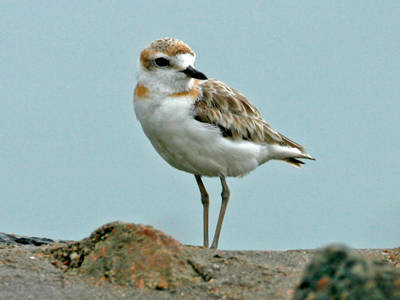
THE LAPWING.
THE Lapwing belongs to the Plover family, a list of birds known as Waders, from their manner of wading in the water and taking food from the surface. Some species have very long legs, as the stork, and are called stilt-birds. Most kinds have long bills. The name Lapwing was given to this branch of the family from its manner of stretching out its long wings and flapping them very quickly.
As you will see in the picture, this bird has a long, pointed crest, or tuft, attached to the back of its head, which it can carry horizontally, or raise in the air, as best suits itself. Its colors are very beautiful. Its chin, throat, and breast are jetty black in the summer, and change to white in the winter months; and it has a black streak, which extends from the chin under the eye. The upper part of the body is a "rich coppery green, glazed with purple, the whole having a brilliant metallic appearance." The upper part of the tail is white, tipped with black, while the wings are black, tipped with white.
As nearly as we can learn, England is its native country, where it lives upon the rivers, lakes, and marshes, and feeds mostly upon insects, worms, and grubs. The latter it has a way of forcing from the ground by stamping upon it.
These birds are so useful in destroying insects that they are often kept in gardens for that purpose. One man used one in this way for a number of years.
For their nests, they select, or make a little hollow spot in the earth into which they place a few straws or grasses, and lay their eggs, four in number. The eggs are very large at one end, sharply pointed at the other, and the bird is careful always to arrange them with their points together, so that they somewhat resemble a cross.
The eggs, under the name of "Plover's eggs," are much prized as an article of food; but they look so much like the ground in color that none but those used to hunting them often succeed in finding them.
These birds use great caution, and display almost human skill, in their care for their eggs and young.' If disturbed while tending them, the male bird rises in the air, and wheels round and round with a flapping flight, piercing the air with continued cries of 'wee-wit, wee-e-wit,' uttered very distinctly. This cry has given the bird the name of Peewit in some places, and has also caused the French to call it “Dix huit” which, in their language, has much the same sound."
The male bird takes this course to turn the attention of the enemy from the nest. The female bird, if disturbed, plays another trick, for the some purpose. "Rising from the nest, she limps away slowly, flapping her wings awkwardly, so as to give the impression that she has injured a wing or a leg, thus trying to tempt the intruder to over-look the nest and pursue her."
What an instance of God's wisdom and love is shown in his manner of providing for the wants of the lower order of animals; and if he has such care for them, how much more may we expect he will do for men. " He is great in little things as well as in great ones."
"O Lord! How manifold are thy works; in wisdom hast thou made them all."
M. J. C.